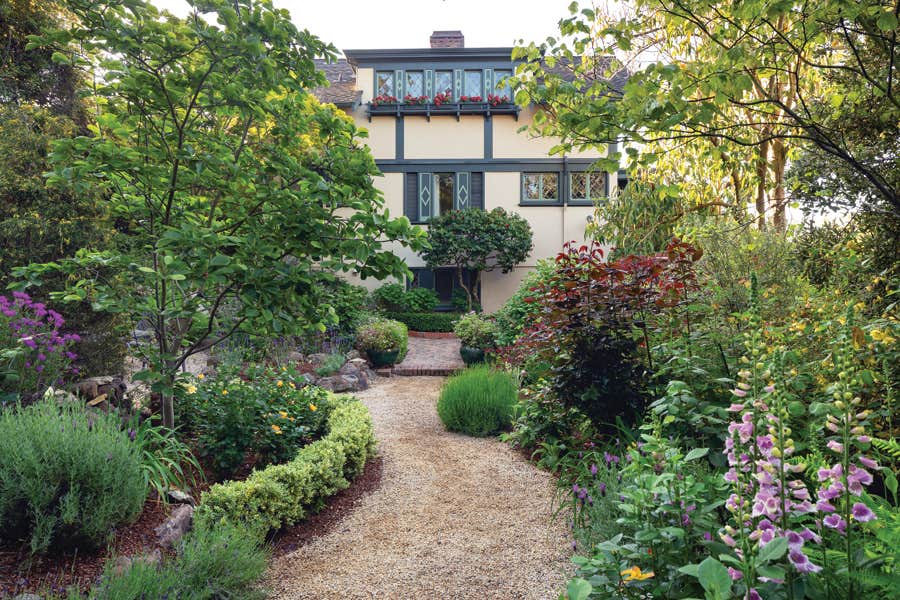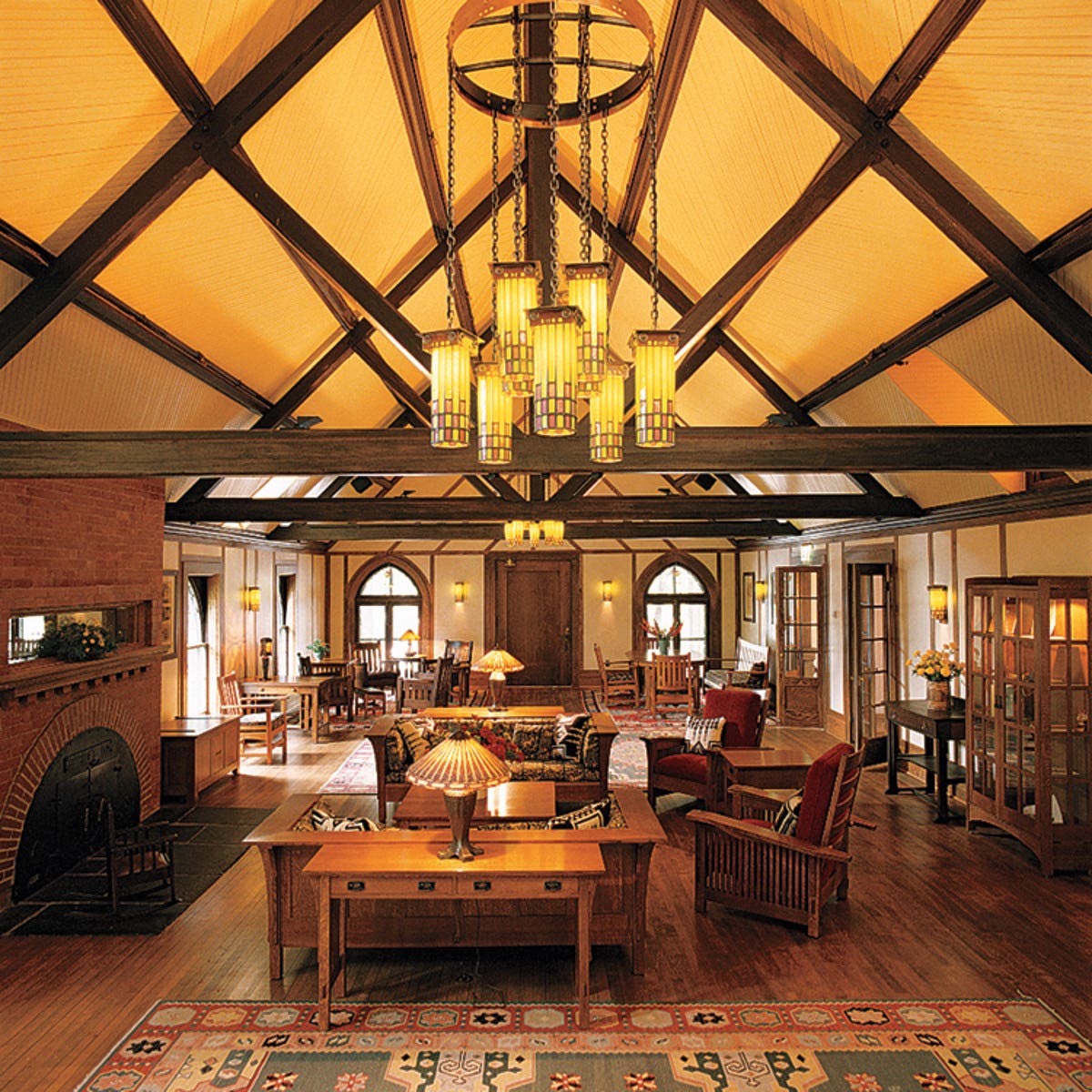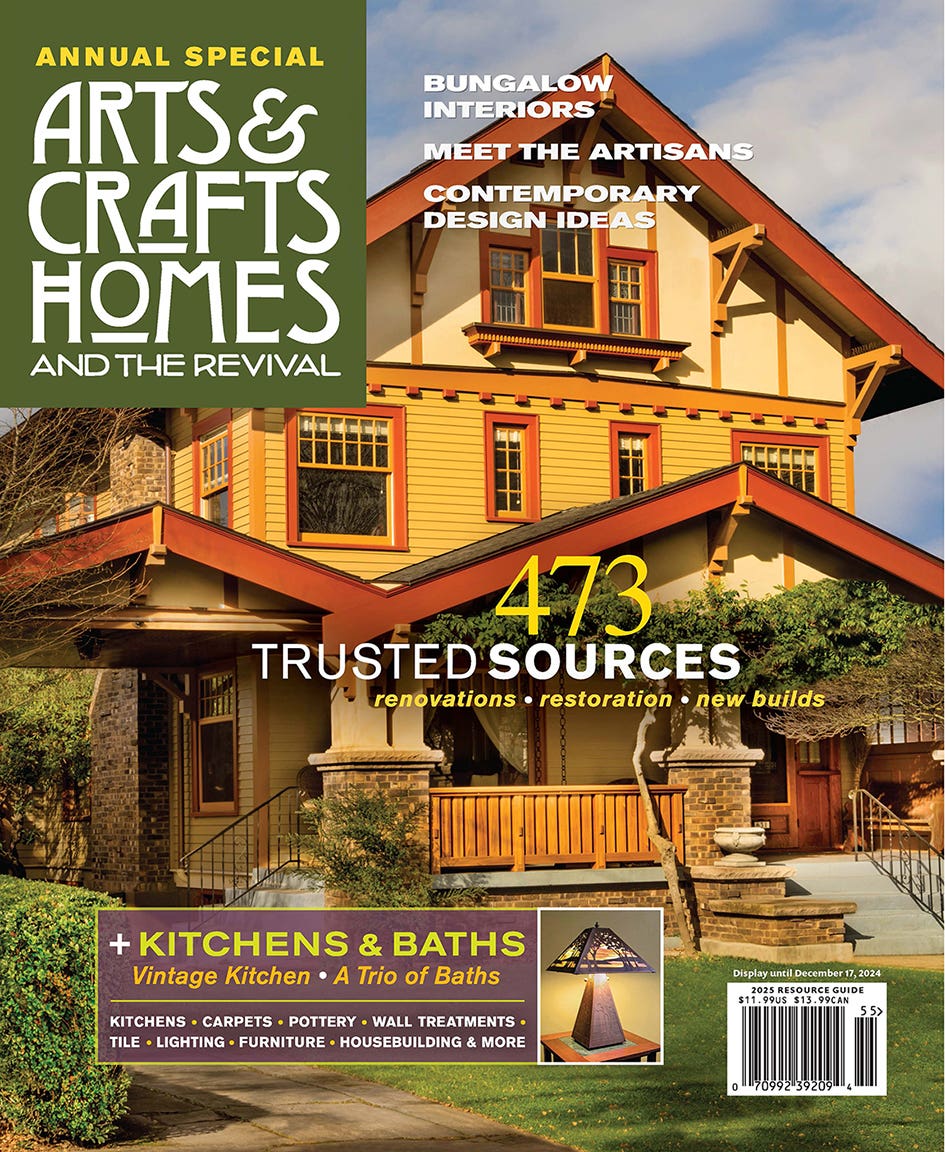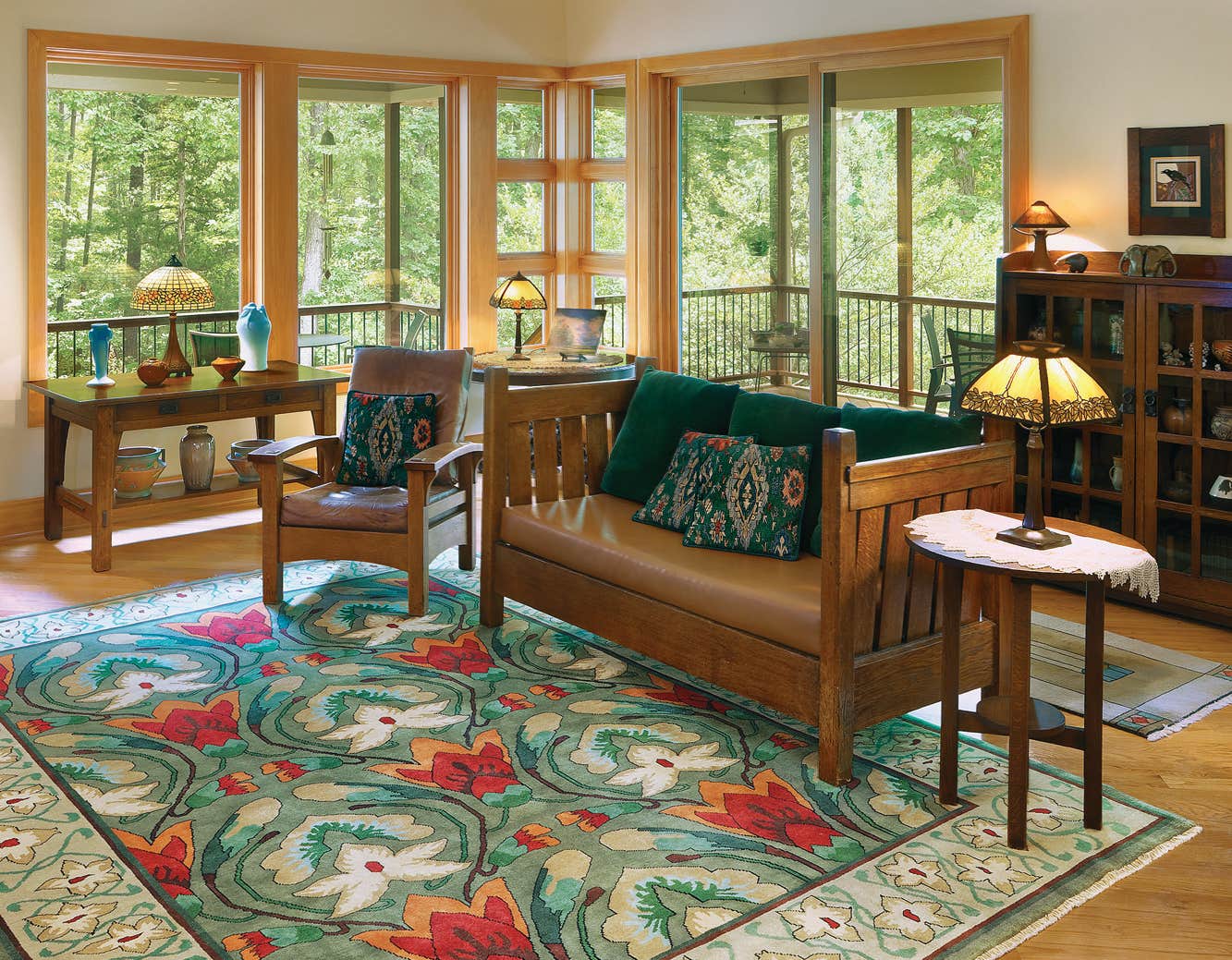A Look at the Best New Work of the Revival
This contemporary bungalow in Flagstaff, Arizona, is a lovely and livable interpretation that relies on a repetitive arch and Native American motifs.
This contemporary bungalow in Flagstaff, Arizona, is a lovely and livable interpretation that relies on a repetitive arch and Native American motifs.
During a wilderness backpacking trip in 1975, Ken and Dorothy Lamm began a love affair with the West, and finally decided to make it their permanent home when Ken retired from his advertising career in Milwaukee. At the same time, the Museum of Northern Arizona, which is situated in the Coconino National Forest, was developing a small artisans’ residential community. The Museum specified that new structures be patterned on the grounds’ historic homes, following an Arts & Crafts, Pueblo Revival, Spanish Colonial, or Forest Service style. Rather than a community planned around, say, golf, “the passion is the Colorado Plateau, the ancient people who lived here, and the beauty of the place,” says Ken, whose Museum membership extends to 2097.
The couple imagined a site-specific dwelling with a smaller footprint than that of their former mid-century glass house on Lake Michigan. "We're not into anything formal," says Dorothy. They were intrigued by concepts from the book The Not So Big House, with its entreaty for a return to permanence, bringing the outside in, union of form and function, human scale, and beautiful detail. These are, of course, the ideals embraced by the original Arts & Crafts movement.
The Lamms hired Deep River Partners, a practice owned by a pair of siblings: architect Richard Sherer and his sister Susan Sherer, an interior designer. (Deep River Partners, Milwaukee, WI: www.deep-river.com) The Lamms were drawn to the partnership’s thoughtful approach and commitment to stewardship. Besides wanting” to simplify their lives,” says Richard Sherer, Ken and Dorothy wanted to “create an energy-efficient home with gorgeous views of the mountains. I think all that would be tough to find, or to re-engineer in an existing house."
Reminiscent of original Arts & Crafts architects, Sherer uses a signature motif for his new commissions. In this house, a graceful, Art Nouveau-influenced arch is a foil for the otherwise rectilinear Craftsman lines. The arch appears in special areas including the front entry, interior door openings, and the fireplace surround. Furniture, including Harvey Ellis chairs, are re-issues by Stickley (www.stickley.com). Built-in bookcases, desks, and alcoves provide storage and workspaces, along with display areas for the couple's collection of Native American art. The earthy color palette was inspired by indigenous flora and rock, including Malapais and Buckskin sandstone. With respect and sensitivity, the couple had their use of Native motifs approved before construction.
Transom windows atop doorways and windows wash every corner with natural light. With ceiling fans turned on, the ventilation afforded provides summer cooling without air conditioning. Other sustainable features include passive solar heat, radiant heat, high-efficiency boilers and appliances, water-saving plumbing fixtures, low-e glazed windows, and a fireplace with an efficient Rumford firebox.
Custom windows throughout the house were designed by the architect and produced by Marvin. (Marvin Windows & Doors, Warroad, MN: www.marvin.com) Low maintenance features on this new house include aluminum-clad windows, cementitious shingles that hold paint longer than wood, and metal roofing with a baked-on finish. Morning Dew Landscapers designed a riparian area in front of the house: rainwater runoff from the roof descends along rain chains into copper bowls, or is directed to the native plants through rocky culverts. The plantings will eventually spread to blend the property back into the forest. (Morning Dew Landscaping, Inc., Flagstaff, AZ: www.morningdewlandscaping.com)
Photos by Tim Fuller
Patricia Poore is Editor-in-chief of Old House Journal and Arts & Crafts Homes, as well as editorial director at Active Interest Media’s Home Group, overseeing New Old House, Traditional Building, and special-interest publications.
Poore joined Old House Journal when it was a Brooklyn-brownstoner newsletter in the late 1970s. She became owner and publisher and, except for the years 2002–2013, has been its editor. Poore founded the magazines Old-House Interiors (1995–2013) and Early Homes (2004–2017); their content is now available online and folded into Old-House Journal’s wider coverage. Poore also created GARBAGE magazine (1989–1994), the first unaffiliated environmental consumer magazine.
Poore has participated, hands-on, in several restorations, including her own homes: a 1911 brownstone in Park Slope, Brooklyn, and a 1904 Tudor–Shingle Style house in Gloucester, Massachusetts, where she brought up her boys and their wonderful dogs.








